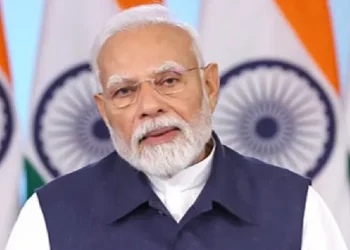Activities contribute highly to West Bengal’s GDP, shows report
The total economic worth of the creative activities involved in the Durga Puja festival is about ₹32,377 crore and the festival contributes 2.58% of West Bengal’s GDP, reveals a study carried out by the British Council.
The first of its kind detailed study of different aspects of the Durga Puja festival commissioned by the West Bengal Government’s tourism department looks at ten creative industries related to the pujas such as installation, idol making, lighting and illumination, retail, sponsorship, advertisement and food and beverages. The project was done between September 2019 and January 2020, with fieldwork completed in an intense three-week period around the time of the festival, and the report recently released.
Creative Economy
The report ‘Mapping the Creative Economy around Durga Puja 2019’ points out that the economic value of the art and decoration segment was ₹860 crore and Kolkata accounted for 15% share of the pandal-making industry in West Bengal.
With regard to idol-making the creative economy was estimated to be about ₹260 to ₹280 crore, where Kolkata alone accounted for about ₹120 crore. 40% of idol-making studios in Kumartuli, the traditional potters’ locality in northern Kolkata, are older than 60 years, the report pointed out.
Retail Sector
The highest contribution to the creative economy was the retail sector, which contributed to ₹27,364 crore, registering a 100% spike in sales during the festive season when discounts and offers are given. Other sectors like literature and publishing contributed about ₹260-270 crore while the film and entertainment sector contributed ₹53.2 crore.
Another sector that made a significant contribution is the food and beverage sector, which contributed a whopping ₹2,854 crore. Consumer spends in this sector during the festive month is believed to be 30% higher than that of the previous month.
“The research report looks at 10 creative industries that drive Durga Puja, possibly the world’s largest public arts festival. This complex research is, as far as we know, the first of its kind in India done on this scale and combines both quantitative and qualitative analyses of the open access ecosystem that feeds the festival economy,” Barbara Wickham, Director of the British Council in India said in the report.
Debanjan Chakrabarti, Director East and Northeast India, British Council, told The Hindu said the methodology used is not only transparent but also replicable for studies on festivals in other parts of India.
The report also pointed out a 120 % spike in the number of bus passengers during the festival and 11% spike in air and rail traffic.
Livelihood Generator
Nandini Chakravorty, Principal Secretary, Tourism, Government of West Bengal said that the livelihood generation based on just one festival in a year is noteworthy. “Families across generations have been involved round the year in idol-making, lighting and illumination, crafts and designs for Durga Puja. The festival is the sole source of earnings across the year for many families,” Ms. Chakravorty added.
While the report reflects pre-COVID figures, experts said that it gives a baseline of the creative economy in the pre-pandemic situation and if studies are done using the same methodology, the impact of the pandemic and the post-pandemic situation could be understood better.
Durga Puja in West Bengal is a cultural extravaganza unmatched in the scale at which it is organised. There are about 36,000 registered community Durga Pujas in West Bengal and 2,500 community Pujas in Kolkata.
Mr. Chakrabarti said that the British Council in partnership with FICCI and The Art X Company has also launched ‘Taking the Temperature survey” to track the impact of COVID-19 on India’s creative economy in the area of arts and culture.
(Economy India)












